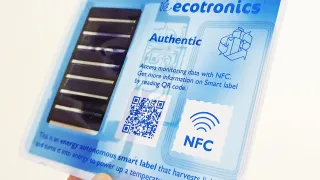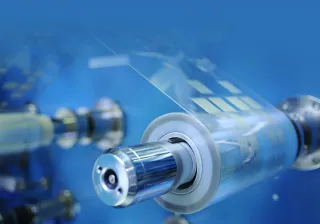Current electronics manufacturing is not meeting the increasing demands for sustainability. By changing manufacturing methods, VTT research shows dramatic positive results in resource efficiency, waste reduction and sustainability.
ESPOO, Finland (February 28th, 2023) VTT Technical Research Centre of Finland announces the results of a study investigating how changing the manufacturing of electronics can improve their environmental impact. For example, one of the project’s most significant findings showed that environmental impact could be reduced by 86% when additive printing methods are used to create flexible electronic components, as reported in detail by LUT University.
The project showed several areas of electronics manufacturing where an impact on environmental footprint and sustainability is possible.
From PCB Etching to Bio-based Substrates: A Shift in Electronics Production
“Traditionally, metal electronics parts are etched out of copper sheets in a process called PCB etching. The process removes unwanted copper from a printed circuit board, so only the required circuit remains while the rest of the sheet isn’t used,” says Liisa Hakola, Senior Scientist and Senior Project Manager at VTT.
“We found that flexible metal electronics parts can instead be printed onto bio-based substrates, like paper or bio-plastic. The process requires less energy and avoids the use of harmful chemicals while drastically reducing material waste and increasing the use of renewable materials. This change in the manufacturing process is the single largest factor in potentially reducing the climate impact of flexible electronics.”
Material Alternatives and Sustainability Improvements in Focus
In printed electronics, there are additional challenges that still need to be resolved. Silver has a high environmental impact and is commonly used for printed electronics. The project found that silver can be replaced with more abundant and less valuable alternatives, such as copper or carbon-based materials. This provides further reduction to the environmental footprint of flexible and wearable electronics. In addition, end-of-life management and longevity of product usability, i.e., better durability and decreased energy consumption, are also key factors in creating more sustainable electronics.
The Future of Electronics: Market Growth, Electronic Waste, and Regulatory Pressure
The flexible electronics market is expected to grow to $45.88 billion by 2026. By 2030, global electronic waste will reach 74 billion kilograms, with only 20% collected or recycled properly. The electronics industry is currently facing major challenges with the availability of crucial materials combined with increasing pressure to cut its environmental footprint and move toward circularity.
In March 2022, the European Commission published its Sustainable Products Initiative, which aims to ensure that all products placed on the EU market become more sustainable. Thereby, the initiative also includes electronics, and so manufacturers are met with increasing pressure to meet new sustainability requirements in the years to come.
“At VTT, our goal is to set a new standard for sustainability in the electronics industry and offer solutions that increase circularity at every stage of the electronics life cycle,” says Maria Smolander, Research Team Leader at VTT. “Implementing these new manufacturing methods on a mass scale is a challenge that the industry will inevitably need to tackle in the coming decade in order to keep up with increasingly strict regulations and demands from consumers.”
This national ecosystem project called ECOtronics was co-funded by Business Finland.






